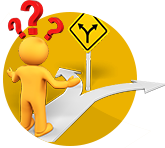Community Assessment and Evaluation
- Community Assessment and Evaluation
Community
The concept of community as client and partner in healthcare helps to generate ideas that create healthier communities. Community practice nurses work with communities to bring about health-
promoting changes. For making substantial changes, community assessment and is used extensively.
Community Assessment Data I
Community Assessment data includes:
- Population
- Birth and death rate
- Unemployment
- Personal income levels
- Number of people living in poverty
- Number of families who own their house
- Number of families living in rented houses
- And so on
Community Assessment Data II
Community Healthcare Nurses collect data by employing one or more of the following methods:
- Informant Interview
- Participant observation
- Windshield survey
- Secondary analysis of existing information
Informant Interview
A discussion with selected members of the community such as active parents, members of minority groups, a church deacon, and others.
Participant Observation
Living in a community and participating in the venous community activities gives direct
and reliable information about the community.
Windshield Survey
An extensive survey of a community’s locality. Various aspects such as service centers, signs of decay, ethnicity, transportation, and housing and zoning are surveyed.
Secondary Analysis of Existing Information
Analyzing the data that is already available about the community.
Evaluation I
Community Assessment helps nurses understand the problems faced by individuals and families. Nurses also evaluate the resources available in the community and use them to solve their clients’ problems.
Evaluation II
Evaluation is the appraisal of the organized health activity or program. Evaluation involves assessing progress by comparing the objectives and results.
Evaluation III
Nurses study the various health problems noted during the assessment stage and set priorities for resolving the problems during the evaluation stage.
Evaluation IV
Atter identifying the high priority issues, nurses set goals and objectives. Goals are documented and broad statements and objectives are recorded as precise statements that indicate the ways to resolve
the issues.
Evaluation V
Home health issues are vicious cycles and nurses need to prepare strategies to break these cycles by identifying appropriate interventions.
Home Health and Hospice
Home health care with its related subspecialty of hospice nursing forms an important part of nursing in public health. It is provided in the familiar surroundings of the family of the client.
Activities
The responsibilities of the home health nurses include:
- Meal preparation
- Medical treatment
- And managing with disability
During the course of service, nurses also:
- Assess the progress of the client
- Report to the client’s physician
- Help to alter treatment according to the changing needs of the client

Accounting Homework
Stuck with a homework question? Find quick answer to Accounting homeworks

Ask Accounting Tutors
Need help understanding a concept? Ask our Accounting tutors

Accounting Exams
Get access to our databanks of Discussion questions and Exam questions
How We Safeguard Your Tutor Quality
All tutors are required to have relevant training and expertise in their specific fields before they are hired. Only qualified and experienced tutors can join our team
All tutors must pass our lengthy tests and complete intensive interview and selection process before they are accepted in our team
Prior to assisting our clients, tutors must complete comprehensive trainings and seminars to ensure they can adequately perform their functions
Interested in becoming a tutor with Online Class Ready?
Share your knowledge and make money doing it
1. Be your own boss
2. Work from home
3. Set your own schedule

Nursing 340 – Public Health Nursing
1. Introduction to Public Health Nursing

